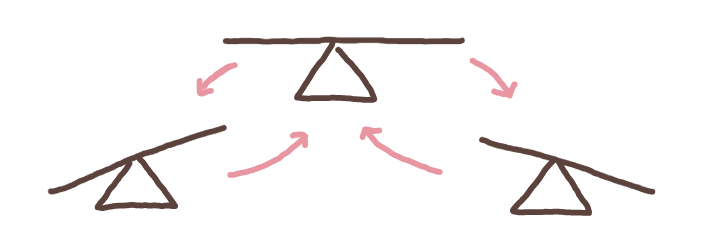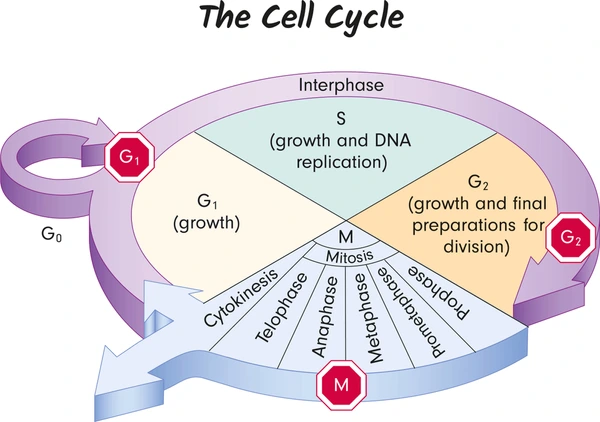ap bio : unit 4 cram sheet
Author Notes
whats up yall!!! this is my unit 4 cram sheet of cell communication and cell cycle!! the content provided here is heavily based from the ap daily videos and my teacher lectures notes! happy studying ;)
like this cram sheet? check out my other cram sheets at my profile!!
external resources to related topic will be linked at the end of the heading!
╭ Other Resources :
:: TO BE ADDED? - mcq progress check﹒﹒already took the mcq? “take it again” in flashcard form with an additional explanation of the answer! (frm urs truly :D )
:: carrara ﹒﹒ 24 min ap bio review video based from the campbell biology 11th edition textbook!
:: sticky science﹒﹒short, bite-sized review videos in the form of reels from a previous ap bio student who got a 5 on the AP exam!
:: khan academy﹒﹒the entire unit 4 course from khan academy!!
:: fiveable ﹒﹒ reviews unit 4 with articles and quizzes for you to practice and review your knowledge on!
﹙✦﹚﹒﹒abbreviations will be used in this guide :)
﹙4.1, 4.5 - Communication﹚
✦﹒cells communicate w/each other thru direct contact at diff distances
short distance - cell sends out local regulators (signals), often used to communicate w/cell that is the same type
long distance - targets cell that is not in the same area, often used to signal cells of a diff type
✦﹒organisms use feedback mechanisms to maintain their internal environments + respond to environmental changes
external + internal cell environments r constantly changing
two types of feedback mechanisms—
negative feedback - maintains homeostasis for a particular condition by regulating physiological processes
basically reverses stuff
operates at molecular + cellular
 basically how negative feedback cycles
basically how negative feedback cyclesex: blood sugar feedback loop
positive feedback - amplifies processes (keeps going until the wanted condition is reached)
ex: giving birth (hormones are continuously secreted until baby is born)
╭ Other Resources :
:: amoeba sisters ﹒﹒ explains the 3 steps of signal transduction as well as ligand and receptors
﹙✦﹚﹒definitely understand the feedback mechanisms, mcqs regarding this topic include correct analysis of how the loop works
﹙4.2-4.4 - Signal Transduction﹚
✦﹒signal transduction pathways link signal reception w/cellular responses
many pathways include protein modification and phosphorylation cascade
protein modification regulates protein synthesis by turning on/off genes in nucleus
ligand binding causes shape change, causing activation of 2nd messenger
phosphorylation cascade enhances and amplifies signal
cascades of molecular interactions relay signals frm receptors target molecules
appropriate responses include cell growth, secretion of molecules, gene expression
has 3 steps
reception detection is signal molecule coming from outside of cell
transduction convert signal to a form that can bring about a cellular response
response specific cellular response to signal molecule
signaling begins with recognition of ligand (chemical messenger) by receptor protein in target cell
protein receptor is VERY specific (ex: g-protein)
✦﹒pathways influence how the cell responds to the environment
environment is not static
organisms need to respond to environment changes in order to survive
these influences can cause changes in gene expression and function
changes in protein type/amt can cause phenotype change
ex: apoptosis
changes can alter cellular response
one disruption causes a downstream of reactions
interference of chemicals may activate or inhibit pathway
alteration of ligand/receptor specificity causes issues in compatibility btwn them (think lock and key!)
╭ Other Resources :
:: amoeba sisters ﹒﹒ explains the 3 steps of signal transduction as well as ligand and receptors
:: professor dave explains ﹒﹒ discusses receptors in signal transduction and phosphorylation cascade
﹙✦﹚﹒regarding these concepts, understand the relationship between ligands and receptors as well as signal transduction in general (esp. 3 steps?!)
﹙4.6-4.7 - Cell Cycle﹚
 diagram of cell cycle - stop sign appearance indicates that there is a checkpoint
diagram of cell cycle - stop sign appearance indicates that there is a checkpoint
✦﹒interphase is the stage in which the cell is growing and preparing for mitosis
majority of the cell’s life is in this stage (90% of the time)
stages of the interphase—
G0 - also called cell arrest, where cell division no longer occurs, as cells can reenter division with appropriate signals (they are nondividing)
not all cells undergo this phase
G1 - cell growth, cell increases in size
S - synthesis, copies of DNA are made via replication
G2 - cytoplasmic components (organelles) are replicated in preparation for division
✦﹒internal controls/checkpoints regulate progression thru the cycle
G1 Checkpoint occurs at the end of the G1 phase
cell size, nutrient, growth factor, and DNA damage check
G2 Checkpoint occurs at the end of G2 phase
DNA replication and damage check
M-spindle Checkpoint checks for fiber attachment to chromosome
cyclins are a group of related proteins associated w/specific phases of cell cycle
diff cyclins r involved in diff phases
concentrations change depending on activity
produced to promote progression
degraded to inhibit progression
uses to activate cyclin-dependent kinases (CDKs)
a grp of enzymes involved in cell cycle regulation
req. cyclin binding (very specific like lock n key)
phosphorylate substrates, promotes certain cell cycle activities
disruptions in the cell cycle may cause cancer or apoptosis/programmed cell death
✦﹒mitosis ensures the transfer of complete genomes from parent to daughter cells via cell division, following the order of PMAT
plays a role in growth, tissue repair, and asexual reproduction
 visual of mitosis’ PMAT steps
visual of mitosis’ PMAT steps
P - Prophase
nuclear envelope disappears
DNA coils into chromosomes
fibers move chromosomes toward the center of the cell
M - Metaphase
fibers align chromosomes at the center of the wall
A - Anaphase
fibers separate chromosomes to chromatids
chromosomes separate at the centromere
T - Telophase
nuclear envelope reappears
chromosomes begin to uncoil
cytokinesis occurs here (the actual splitting of the cell into two new daughter cells)
ensures equal distribution of cytoplasm to both daughter cells
╭ Other Resources :
:: amoeba sisters ﹒﹒ rundown on what happens in each stage of interphase, checkpoints and regulation, as well as what happens when things go wrong (ft. cancer)
:: amoeba sisters ﹒﹒ deep dive on mitosis and its stages
:: sciencemusicvideos ﹒﹒ mitosis rap song cuz why not!!
﹙✦﹚﹒your best bet is to understand it all— steps in interphase and what each stage does, mitosis and what each stage of it does via PMAT, what are the checkpoints and what do they check for
 Knowt
Knowt
